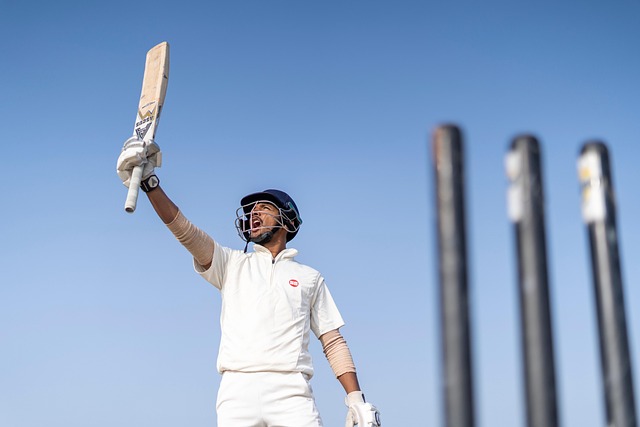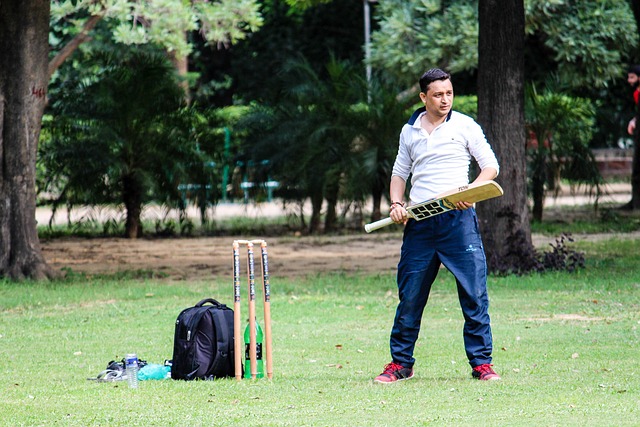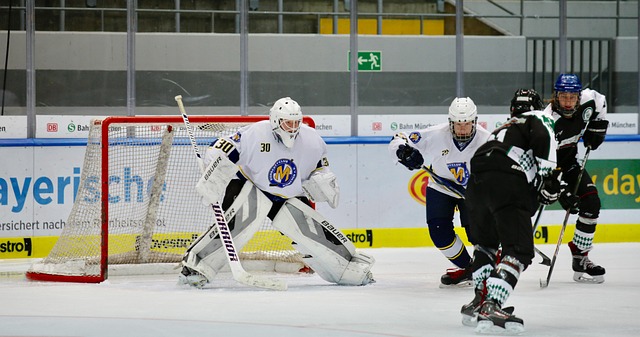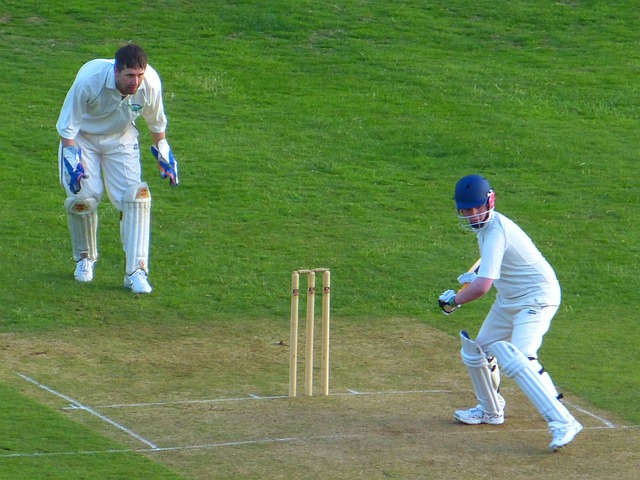Cricket team captains should adopt a holistic approach to motivate underperforming players, focusing on both technical and psychological aspects. This involves setting clear goals, tailored training, analyzing media, incorporating sport science, fostering a supportive environment, celebrating progress, rewarding achievements, and selecting an inspiring captain who understands each player's abilities.
Motivating underperforming players is crucial for any cricket team’s success. This comprehensive guide explores effective strategies to boost player morale and performance, focusing on key aspects like understanding individual needs, setting realistic goals, fostering teamwork, recognizing achievements, and the vital role of captain selection based on leadership qualities. Implement these tactics to transform your cricket team into a cohesive, motivated unit.
- Understand Underperforming Players' Needs
- Set Clear and Achievable Goals
- Foster a Supportive Team Environment
- Recognize and Reward Progress
- Captain Selection: Leadership Qualities Matter
Understand Underperforming Players' Needs

Understanding the unique needs of underperforming players is the cornerstone of any successful Cricket Team captaincy strategy. Each player brings their own set of strengths and weaknesses, influenced by factors like physical abilities, mental fortitude, and even external pressures from media coverage or personal expectations. To effectively motivate these individuals, captains must adopt a holistic approach that considers both technical and psychological aspects.
One effective method is to tailor training routines for cricketers, focusing on specific areas where the player excels or struggles. Incorporating cricket media coverage analysis can also provide valuable insights into players’ performance trends, helping coaches design targeted improvements. Moreover, sport science in Cricket plays a pivotal role in understanding bowling action mechanics and batting techniques for beginners, ensuring that each player receives personalized guidance to refine their skills. Even if players are facing intense scrutiny, remember that a supportive environment can make all the difference. Give us a call at women’s cricket highlights to explore more strategies tailored to your team’s unique dynamics.
Set Clear and Achievable Goals

Setting clear and achievable goals is a fundamental strategy to motivate underperforming players within a cricket team. Coaches should work closely with each player to establish specific, measurable objectives tailored to their individual strengths and areas for improvement. For instance, focusing on improving batting averages or enhancing bowling accuracy through targeted practice sessions can provide players with a sense of purpose and direction. These goals should be realistic yet challenging, allowing athletes to experience the satisfaction of accomplishment as they progress towards them.
Incorporating game-specific conditioning and cricket equipment guides into training routines can further motivate team members by showcasing tangible ways to improve performance. Additionally, highlighting women’s cricket highlights from past successes can inspire players, demonstrating that consistent effort translates into on-field glory. Encouraging tactical decision-making discussions also fosters a culture of collaboration and intellectual growth, where players actively contribute to the team’s overall strategy, making them feel valued and invested in the cricket team’s success. Remember, by regularly reviewing and adjusting goals, you can keep the team motivated, engaged, and prepared for any challenge, ultimately driving their performance to new heights. Visit us at [team building activities sport anytime] for more insights into player motivation strategies.
Foster a Supportive Team Environment

Creating a supportive team environment is paramount when motivating underperforming players in cricket. Team dynamics play a significant role in fostering a positive atmosphere where every member feels valued and encouraged. Simple gestures such as celebrating individual and team achievements, no matter how small, can go a long way in boosting morale. Coaches should also promote open communication, ensuring players feel comfortable sharing their concerns and aspirations without fear of judgment. Encouraging collaborative problem-solving among peers can help players take ownership of their performance and offer each other constructive feedback.
Additionally, incorporating strategy development sessions that delve into the rules of one-day internationals and cricket analytics introduction can make practice more engaging. By introducing performance tracking metrics, players can identify areas for improvement and set specific goals. This data-driven approach empowers them to make informed decisions about their gameplay, ultimately enhancing their overall performance. Remember, a supportive team environment, combined with strategic development and the right performance tracking tools, can give us a call at sport psychology fundamentals, transforming underperforming cricket teams into formidable champions.
Recognize and Reward Progress

Recognizing and rewarding progress is a powerful motivator for any cricket team player, fostering a culture of achievement and improvement. As they strive to enhance their skills, players appreciate acknowledging their efforts and milestones. Implementing simple reward systems can go a long way in boosting morale and encouraging underperforming athletes. For instance, recognizing a player’s improved batting average or exceptional fielding could inspire them to continue pushing their boundaries.
This strategy aligns with broader team dynamics improvement and performance enhancement techniques. By celebrating individual progress, the team as a whole becomes more engaged, creating a positive feedback loop. Moreover, it encourages players to set personal goals and provides an opportunity to connect these achievements with the broader context of the cricket team’s success, inspiring them to contribute even further during their next game or practice session. Encouraging players to visit the cricket museum can also offer valuable insights into the sport’s history, fostering a deeper connection and appreciation for their development journey.
Captain Selection: Leadership Qualities Matter

Selecting the right cricket team captain is pivotal to fostering a positive team dynamic and enhancing performance. Leadership qualities transcend mere tactical acumen; an effective leader inspires, motivates, and unifies teammates, cultivating a strong competitive edge.
Beyond strategic decision-making, a capable captain should exemplify resilience, excellent communication skills, and a deep understanding of each player’s strengths and weaknesses. This knowledge enables them to assign roles suitable to individual capabilities, boosting morale and confidence. Moreover, incorporating aspects of sports psychology into their approach can further enhance performance. For instance, encouraging mental toughness training or implementing specific batting techniques for beginners tailored to individual needs can significantly impact overall team outcomes. Visit us at sport psychology fundamentals anytime for more insights on this front.
Motivating underperforming players within a cricket team is a multifaceted approach that combines understanding, clear goal-setting, supportive leadership, and recognition. By implementing these strategies, teams can create an environment conducive to growth and improvement, ultimately enhancing overall performance. When selecting captains, prioritizing leaders with strong communication skills, empathy, and strategic thinking ensures a cohesive unit focused on collective success. Embracing these methods fosters not just improved individual performances but also cultivates a winning team spirit in the cricket field.

Leave a Reply